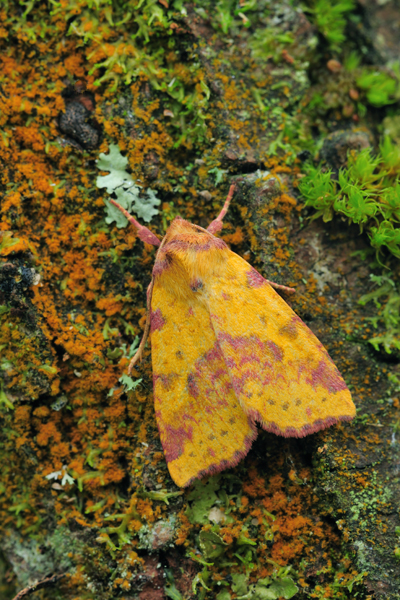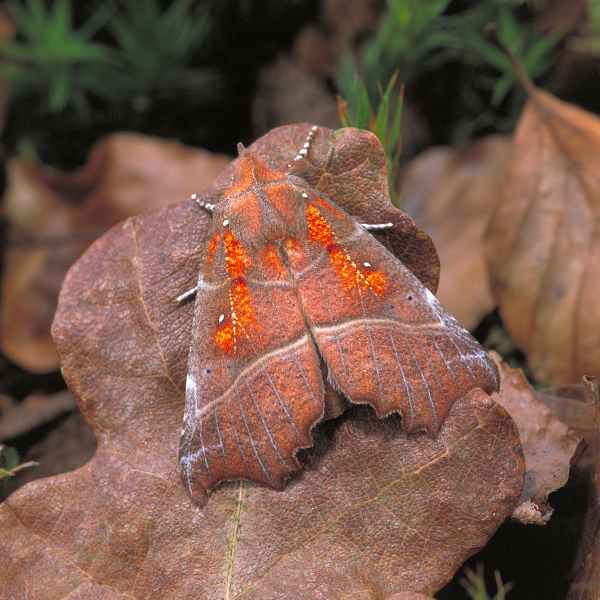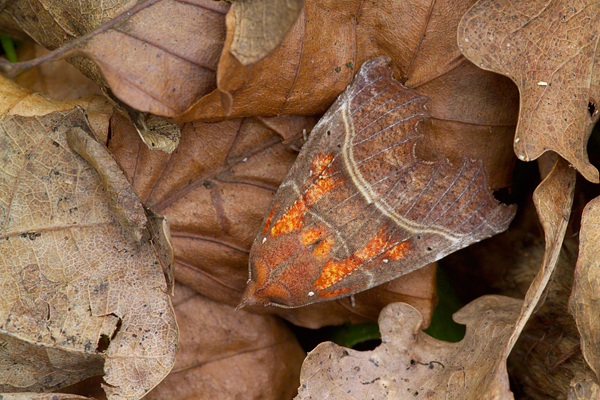Moth diary September 2012
With the onset of autumn the moth population like many other insect groups begins to slow down. As the darker nights draw in there are still new species emerging, and activity continues into November, but on a lower scale. December and January are the quietest months with only small number species flying at that time of the year!
Pink-barred Sallow Xanthia togata
This is an attractive early autumn species with a pinkish red head and a yellow thorax. There is a pink diagonal bar and conspicuous blotches along the edge of the forewing. Its a fairly common and widespread species, favouring deciduous woodland, marshes and fens where sallows are common. The caterpillars feed inside the catkins of the foodplant. Adult moths are attracted to the flowers of Ivy and over ripe blackberries.
This adult was found resting on the leaves of bramble in early morning, in heavy overcast conditions. The rich autumnal colours of the adult moth blend nicely with the mottled appearance of the leaves.
Lighting conditions were rather poor producing a flat image with little vibrancy. In these situations I frequently use fill-flash to boost the contrast. I positioned the lens almost vertically over the subject to maximize on my depth of field. Adopting an oblique position would almost certainly have kept the far edge of the forewing out of focus. Using a longer focal macro or a short telephoto with extension tubes gives additional working distance and you are less likely to disturb the vegetation close to the moth!
Above: adult in normal resting posture, fill-flash, tripod
Herald Scoliopteryx libatrix
This is a very distinctive handsome moth with conspicuous orange blotches and deeply scalloped edges to the forewings. There are white cross-lines towards the outer edge of the forewings, which are always held in a closed position when at rest.
The moths emerge from late August to early November and feed on Ivy flowers and over ripened berries. Adults then enter hibernation and usually seek out sheltered spots in old outbuildings, sometimes communally, and reemerge in spring.
The larvae can be found from late May until July and feed on willows, aspens and poplars.
Above: a freshly emerged adult in natural resting posture, fill-flash, tripod.
I never get tired of seeing this moth; in fact, it was one of the first species I ever photographed? It hails the onset of autumn and after reemergence the return of spring. The moth blends naturally with fallen leaves and can be difficult to detect.




